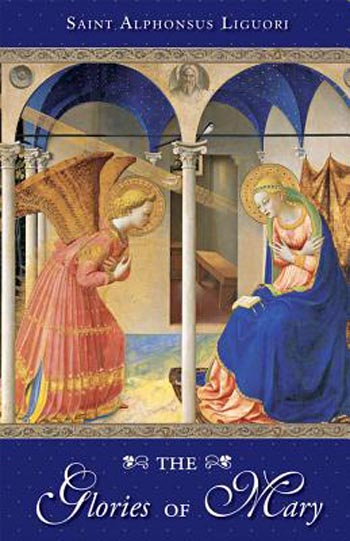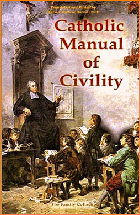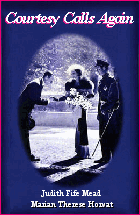Book reviews
 |
 |
 |
 |
 |
 |
 |
The Glories of Mary, a Defense
Against the Jansenists & Protestants
Review of The Glories of Mary by St. Alphonsus de Liguori, Second American Edition, NY, P.J. Kenedy & Sons, 1888, 808 pp.
Throughout the blessed History of our Church, there have been many glorious authors and many profound spiritual works. St. Alphonsus Liguori (1696-1787) stands among these as one of the most eloquent and yet simple of his time. This Doctor of the spiritual life has written many books that appealed to the simple man, but at the same time impress the theologian.
As a young priest, he made a vow to God that he would never waste his time. This fearful vow, which should not be taken by an ordinary soul unless divinely inspired, found our Saint even in his old age sitting for long hours at his desk writing, his back bowed, often holding a piece of marble to his head in order to appease the ailments that assailed him.
From the many extraordinary works that came from the pen of this theologian, The Glories of Mary looms large as a spiritual classic that saints and sinners alike have loved and cherished, as it has helped them to grow in that necessary devotion for our salvation, devotion to Mary.
Apologia of the devotion to Our Lady
It was in the 18th century that this Doctor of the Church wrote the splendid work The Glories of Mary, in good part as a defense of Marian devotion that was under strong attack by the Jansenists and Protestants. This is why throughout the work we see Alphonsus frequently quoting Scriptures and many great Saints, Mystics and Doctors, rarely stating his own opinion, in order to show that the constant teaching of the Church supports devotion to Our Lady.
During his time the Jansenist heresy was particularly insidious since it hid itself under the cover of the Church, infecting her children with its poisoned doctrine on Our Lady. Jansenism criticized the popular devotion to Mary for excessive sentimentalism and an erroneous trust in Mary’s power to protect and save.
 A title that evoked the special anger of the Jansenists was Mary as the ‘Mother of Mercy.’ The Jansenists pretended this title was superfluous and invented because it was not found in the writings of the Apostles. Thus, in the very first chapter, where each line of the Salve Regina it is expounded upon, St. Alphonsus starts with a strong defense of Mary as Our Mother and explains how great our confidence must be in her mercy, based on this fact alone.
A title that evoked the special anger of the Jansenists was Mary as the ‘Mother of Mercy.’ The Jansenists pretended this title was superfluous and invented because it was not found in the writings of the Apostles. Thus, in the very first chapter, where each line of the Salve Regina it is expounded upon, St. Alphonsus starts with a strong defense of Mary as Our Mother and explains how great our confidence must be in her mercy, based on this fact alone.
The Advocate and Refuge of Sinners are titles that also irritate the Jansenists and Protestants, who purport that it is impertinent for sinners to go to Mary, since she will only have pity on sinners insofar as Jesus Christ warns her of their needs and inspires in her the desire to pray for them.
In Chapter VI, St. Alphonsus, quoting St. Bonaventure, teaches that sinners should turn to Mary because she will obtain by her prayers whatsoever she will, precisely because she is the Mother of God. St. Bernard writes: “Wishing to show all possible mercy, the Eternal Father gave us Jesus Christ as our principal advocate and Mary as our advocate with Jesus.” (p. 221)
With their pessimistic view of human nature and conviction that only a few would be saved, The Jansenists – like the Calvinists – considered it heresy to speak of Mary as Our Hope. Christ alone is worthy of such a title, they claim, and those who place their hope in a creature are accursed of God. The impious Luther said, that he “could not endure that the Roman Church should call Mary, who is only a creature. For God alone is our hope, and Jesus Christ is our Mediator, and God curses those who place their hope in a creature.” (p. 194)
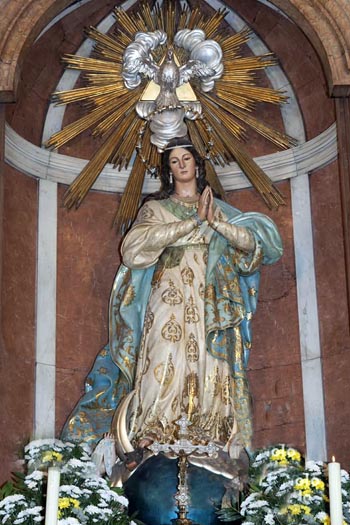 And so, in Chapter III titled Spes Nostra Salve – Hail Our Hope, St. Alphonsus boldly assures us that indeed we are called to supplicate the Virgin with holy hope: “With reason does the Church, then, apply to Mary the words of Ecclesiasticus, with which he salutes her: “Mother of holy hope.” (p. 117) Basing himself on St. Thomas Aquinas, St. Alphonsus demonstrates soundly why we justly call the Virgin “Our Hope” – not as the principal cause, but as the intermediate cause.
And so, in Chapter III titled Spes Nostra Salve – Hail Our Hope, St. Alphonsus boldly assures us that indeed we are called to supplicate the Virgin with holy hope: “With reason does the Church, then, apply to Mary the words of Ecclesiasticus, with which he salutes her: “Mother of holy hope.” (p. 117) Basing himself on St. Thomas Aquinas, St. Alphonsus demonstrates soundly why we justly call the Virgin “Our Hope” – not as the principal cause, but as the intermediate cause.
This heretical school of spirituality was also totally against the "dangerous" doctrine of the Immaculate Conception as an affront to the Divine Justice in face of the common depravity of all human nature. Not even Our Lady was exempt from this prescript of Justice, according to them.
In the First Discourse of Part II, St. Alphonsus makes three points showing how befitting it was to all Three of the Divine Persons that Mary should be preserved from Original sin. He demonstrates how it suited the Father to “preserve her from it as His Daughter, the Son as His Mother, and the Holy Spirit as His Spouse.”
Based on Scriptures, the Magisterium and the writings of Church Doctors and Saints, St. Alphonsus thus shows in a most convincing way that it is impious and erroneous to assert that devotion to Mary takes away honor from Our Lord, as the Jansenists asserted and Protestants continue to spout.
Such a heresy is equal to believing that the beauty of the moon steals our admiration of the brightness of the sun. When Mary is honored, God is honored doubly. For who made her His Daughter, Mother and Spouse if not the Lord Himself?
We will never be able to give more glory and praise to Mary than God already has, so let us never hesitate or be pressured by heretics or progressivists inside the Church to abandon our love for her. As St. Augustine rightly said: “All the tongues of men, even if all their members were changed to tongues, would not be sufficient to praise her as she deserves.”
Devotional practices & example
It is interesting to also mention the different devotional practices St. Alphonsus recommends at the end of his work: Fasting in honor of Mary, visiting her images, giving alms in her honor, praying her Office, etc. (pp. 643-644) Many of these are sadly scarce practiced or preached by the members and clergy of the Vatican II Church.
Sadly, in today’s Ecumenical Church these practices of devotion to the “Divine Mother,” as St. Alphonsus addresses her many times in his work, are being dismissed lest they might “scandalize” the Protestants! Instead of defending the honor of Our Lady against the heretics, as St. Alphonsus did not fear to do, constant capitulations to their false teaching are being made in the name of the ecumenism and inter-religious dialogue promoted by Vatican II.
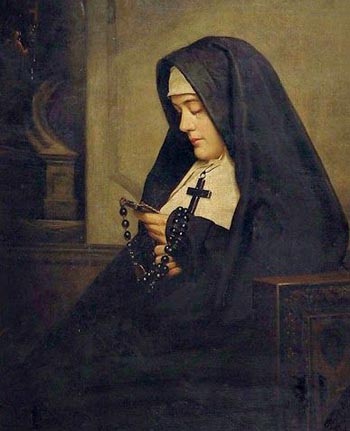 Throughout this spiritual work, St. Alphonsus includes many short stories, or rather histories, which are intended to give the reader further proof of the mercy and love of Mary and the necessity of being devoted to her. I will include just one example to provide our readers with a small glimpse of these charming tidbits:
Throughout this spiritual work, St. Alphonsus includes many short stories, or rather histories, which are intended to give the reader further proof of the mercy and love of Mary and the necessity of being devoted to her. I will include just one example to provide our readers with a small glimpse of these charming tidbits:
“The blessed Alanus relates of a lady, named Dominica, who was accustomed to recite the Rosary, but gave up this devotion. Afterwards she became so poor, that in desperation she stabbed herself in three different places.
“But just as she was breathing her last, and the devils came to take her to Hell, the Most Holy Mary appeared to her, and said to her: ’My daughter, you have forgotten me, but I have not been willing to forget you, on account of that Rosary that you have for a time recited in my honor. And now,” she added, ’if you will continue to recite it, I will restore life to you, and also the possessions you have lost.’
“Dominica was restored to health, and continuing the practice of reciting the Rosary, recovered her possessions, and at her death was again visited by Mary, who commended her fidelity, and she died a holy death.”
The Glories of Mary during Lent
As we are now in the season of Penance, The Glories of Mary is a most beneficial book for our spiritual reading. It is a work that will comfort the penitent who, in this season of the Church’s calendar, is reminded he might always turn to Our Lady, who will lead him back to favor before God. St. Alphonsus comforts such souls, reminding them how our Blessed Mother is more ready to save us than we are willing to be saved. The just souls will find greater incentives to follow their penances and increase their devotion to Our Lady, which can never be too much.
May this blessed work continue to inspire souls to have love and devotion to Our Lady, both during Lent and throughout the Liturgical Year, replete with so many feast days honoring her. And may Our Queen, finding our devotion to her true and sincere, bring us to know her Beauty and Goodness and lead us to the Beatific Vision hereafter.
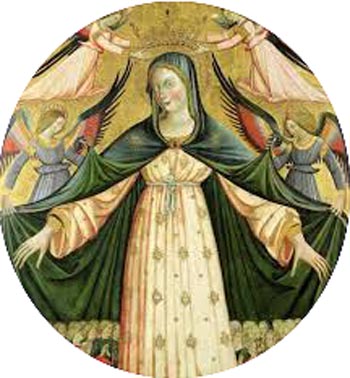

As a young priest, he made a vow to God that he would never waste his time. This fearful vow, which should not be taken by an ordinary soul unless divinely inspired, found our Saint even in his old age sitting for long hours at his desk writing, his back bowed, often holding a piece of marble to his head in order to appease the ailments that assailed him.
From the many extraordinary works that came from the pen of this theologian, The Glories of Mary looms large as a spiritual classic that saints and sinners alike have loved and cherished, as it has helped them to grow in that necessary devotion for our salvation, devotion to Mary.
Apologia of the devotion to Our Lady
It was in the 18th century that this Doctor of the Church wrote the splendid work The Glories of Mary, in good part as a defense of Marian devotion that was under strong attack by the Jansenists and Protestants. This is why throughout the work we see Alphonsus frequently quoting Scriptures and many great Saints, Mystics and Doctors, rarely stating his own opinion, in order to show that the constant teaching of the Church supports devotion to Our Lady.
During his time the Jansenist heresy was particularly insidious since it hid itself under the cover of the Church, infecting her children with its poisoned doctrine on Our Lady. Jansenism criticized the popular devotion to Mary for excessive sentimentalism and an erroneous trust in Mary’s power to protect and save.

He took up his pen to defend the honor of Our Lady, Mother of Mercy & Refuge of Sinners
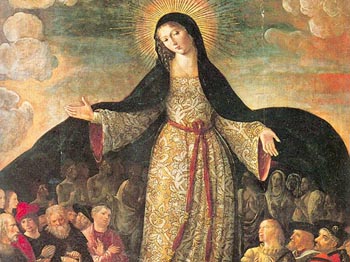
The Advocate and Refuge of Sinners are titles that also irritate the Jansenists and Protestants, who purport that it is impertinent for sinners to go to Mary, since she will only have pity on sinners insofar as Jesus Christ warns her of their needs and inspires in her the desire to pray for them.
In Chapter VI, St. Alphonsus, quoting St. Bonaventure, teaches that sinners should turn to Mary because she will obtain by her prayers whatsoever she will, precisely because she is the Mother of God. St. Bernard writes: “Wishing to show all possible mercy, the Eternal Father gave us Jesus Christ as our principal advocate and Mary as our advocate with Jesus.” (p. 221)
With their pessimistic view of human nature and conviction that only a few would be saved, The Jansenists – like the Calvinists – considered it heresy to speak of Mary as Our Hope. Christ alone is worthy of such a title, they claim, and those who place their hope in a creature are accursed of God. The impious Luther said, that he “could not endure that the Roman Church should call Mary, who is only a creature. For God alone is our hope, and Jesus Christ is our Mediator, and God curses those who place their hope in a creature.” (p. 194)

Jansenists deny the Immaculate Conception of Mary
This heretical school of spirituality was also totally against the "dangerous" doctrine of the Immaculate Conception as an affront to the Divine Justice in face of the common depravity of all human nature. Not even Our Lady was exempt from this prescript of Justice, according to them.
In the First Discourse of Part II, St. Alphonsus makes three points showing how befitting it was to all Three of the Divine Persons that Mary should be preserved from Original sin. He demonstrates how it suited the Father to “preserve her from it as His Daughter, the Son as His Mother, and the Holy Spirit as His Spouse.”
Based on Scriptures, the Magisterium and the writings of Church Doctors and Saints, St. Alphonsus thus shows in a most convincing way that it is impious and erroneous to assert that devotion to Mary takes away honor from Our Lord, as the Jansenists asserted and Protestants continue to spout.
Such a heresy is equal to believing that the beauty of the moon steals our admiration of the brightness of the sun. When Mary is honored, God is honored doubly. For who made her His Daughter, Mother and Spouse if not the Lord Himself?
We will never be able to give more glory and praise to Mary than God already has, so let us never hesitate or be pressured by heretics or progressivists inside the Church to abandon our love for her. As St. Augustine rightly said: “All the tongues of men, even if all their members were changed to tongues, would not be sufficient to praise her as she deserves.”
Devotional practices & example
It is interesting to also mention the different devotional practices St. Alphonsus recommends at the end of his work: Fasting in honor of Mary, visiting her images, giving alms in her honor, praying her Office, etc. (pp. 643-644) Many of these are sadly scarce practiced or preached by the members and clergy of the Vatican II Church.
Sadly, in today’s Ecumenical Church these practices of devotion to the “Divine Mother,” as St. Alphonsus addresses her many times in his work, are being dismissed lest they might “scandalize” the Protestants! Instead of defending the honor of Our Lady against the heretics, as St. Alphonsus did not fear to do, constant capitulations to their false teaching are being made in the name of the ecumenism and inter-religious dialogue promoted by Vatican II.

Our Lady does not forget
the nun’s devotion to the Rosary
“The blessed Alanus relates of a lady, named Dominica, who was accustomed to recite the Rosary, but gave up this devotion. Afterwards she became so poor, that in desperation she stabbed herself in three different places.
“But just as she was breathing her last, and the devils came to take her to Hell, the Most Holy Mary appeared to her, and said to her: ’My daughter, you have forgotten me, but I have not been willing to forget you, on account of that Rosary that you have for a time recited in my honor. And now,” she added, ’if you will continue to recite it, I will restore life to you, and also the possessions you have lost.’
“Dominica was restored to health, and continuing the practice of reciting the Rosary, recovered her possessions, and at her death was again visited by Mary, who commended her fidelity, and she died a holy death.”
The Glories of Mary during Lent
As we are now in the season of Penance, The Glories of Mary is a most beneficial book for our spiritual reading. It is a work that will comfort the penitent who, in this season of the Church’s calendar, is reminded he might always turn to Our Lady, who will lead him back to favor before God. St. Alphonsus comforts such souls, reminding them how our Blessed Mother is more ready to save us than we are willing to be saved. The just souls will find greater incentives to follow their penances and increase their devotion to Our Lady, which can never be too much.
May this blessed work continue to inspire souls to have love and devotion to Our Lady, both during Lent and throughout the Liturgical Year, replete with so many feast days honoring her. And may Our Queen, finding our devotion to her true and sincere, bring us to know her Beauty and Goodness and lead us to the Beatific Vision hereafter.

Spes nostra. Salve – Hail our Hope
Posted March 17, 2025

______________________
